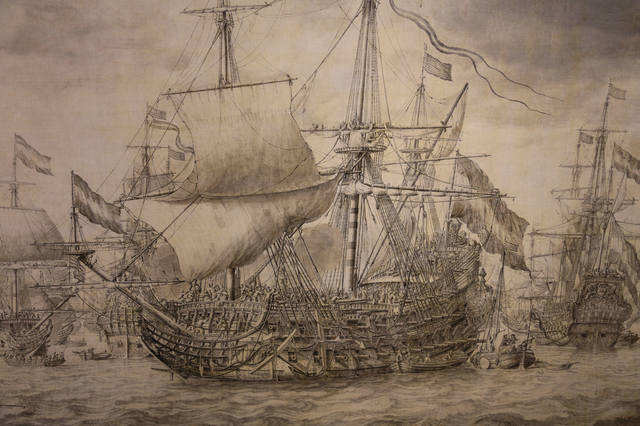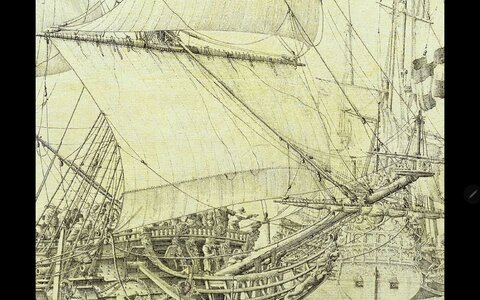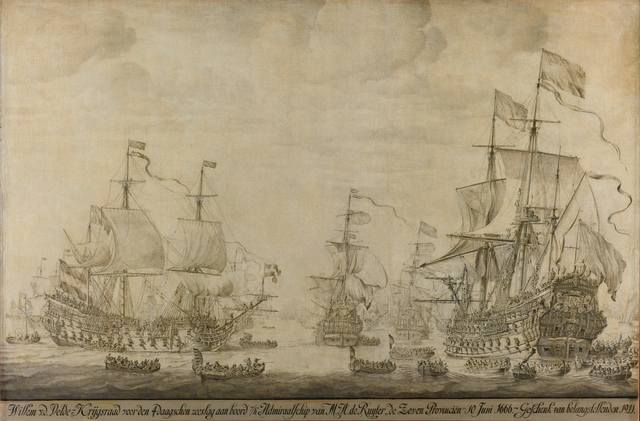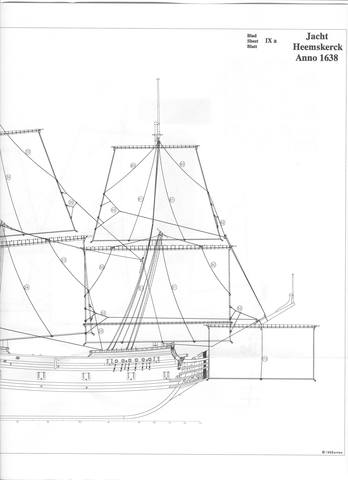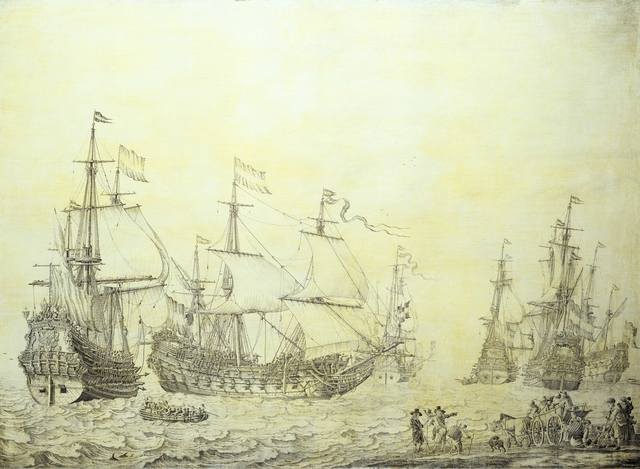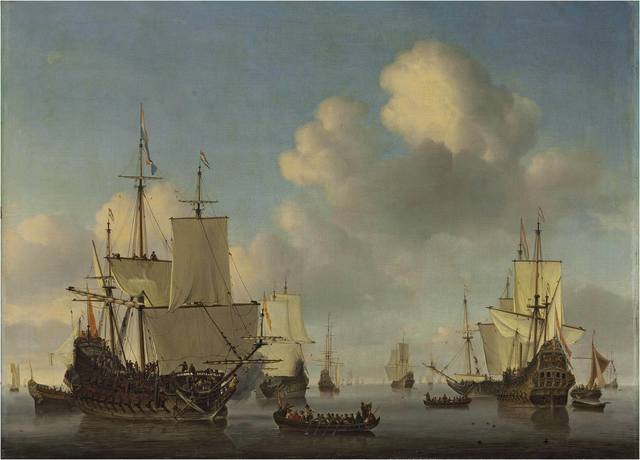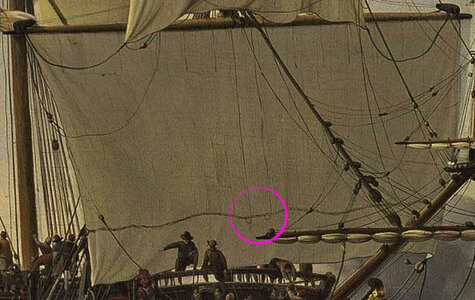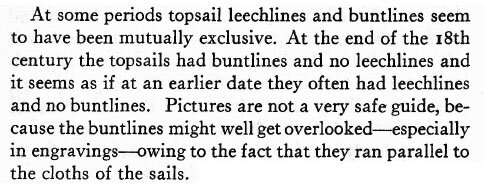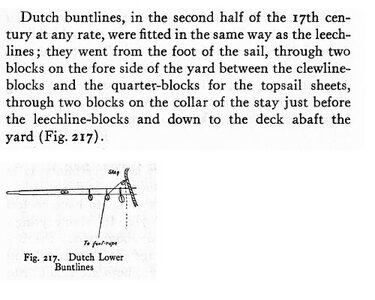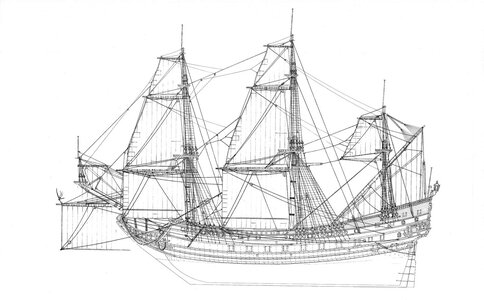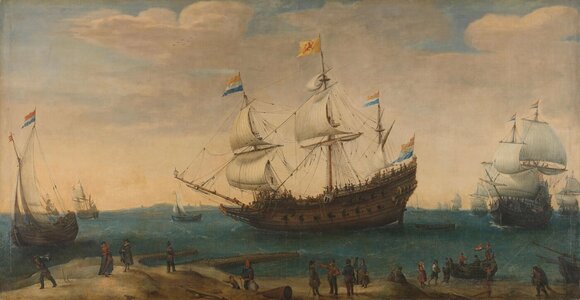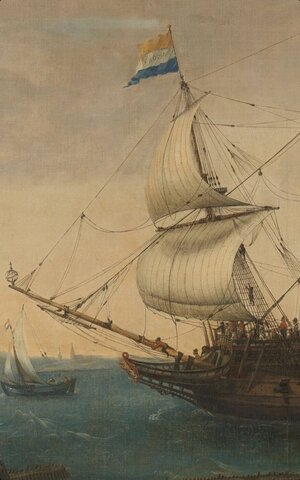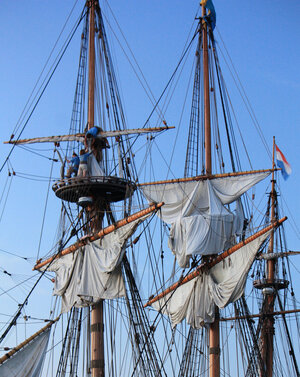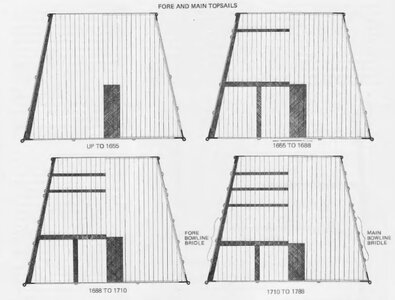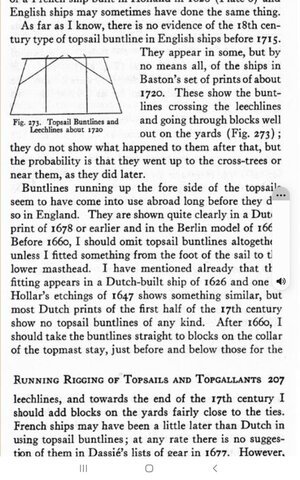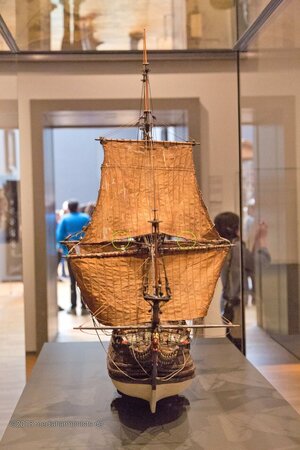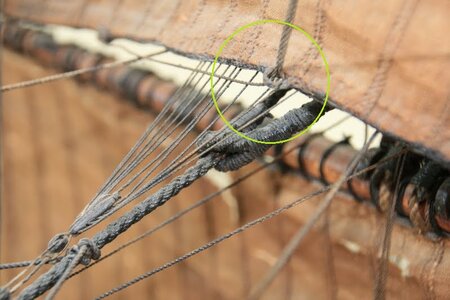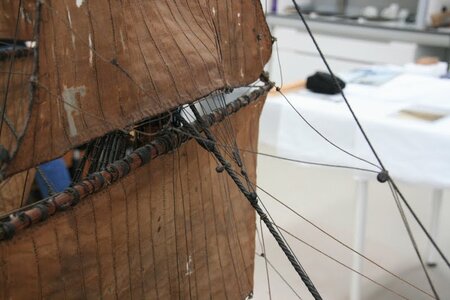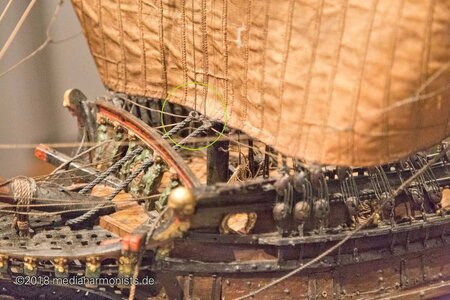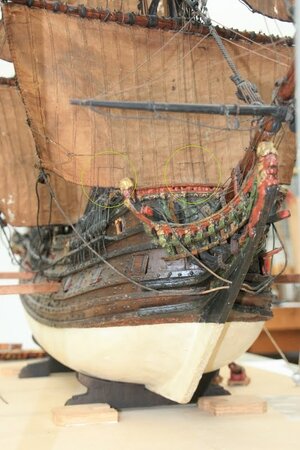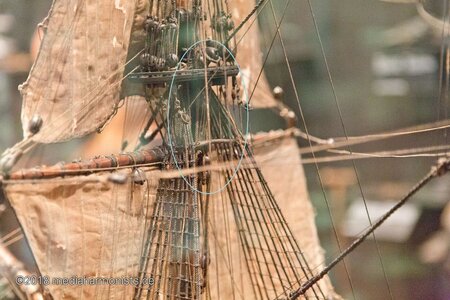- Joined
- Feb 22, 2021
- Messages
- 130
- Points
- 253

Hi Stephan,
I think we have another fantastic example of how different conclusions, solutions and drawings we are getting from researchers... of course no offense in here to their tremendous work... which is real treasure!
It's just showing us how complex this parts and whole rigging were and how this knowledge disperse over the years to that stage that we can't find one solid interpretation... even if we think we have it... someone will come and show... that this might be not that obvious.
We are always looking for one solution... but it was so many of them... and probably all correct it's just making our life as a modelers tough
it's just making our life as a modelers tough
But it's super interesting... and can't thank enough to Gents like Ab Hoving for sharing his knowledge through books and forum.
Drawing from Rijksmusem looks to me to be the best of PW existing...
Honestly, never seen them before...
Batavia plans drawn by Willem Vos (if I'm correct) are great too... but yes please I will drop you my e-mail
I will drop you my e-mail  I can take as much as possible of that kind of drawings
I can take as much as possible of that kind of drawings 
Alright.... so getting back to our conversation...
Bonnet on fore and main course seems to be explained with legit evidence from Rijksmuseum plans.
Buntlines... fore and main course has clearly visible lining, which is reinforcement for cringles... and both sails have 2 on each side... no doubts here then....
However, drawing shows topsails and fore has visible lining on the sail... one for each side... but main topsail doesn't have lining on the drawing so no buntlines (???) just kidding... this is obvious by now... it has the same construction and parts as fore... just a little bit bigger
so no buntlines (???) just kidding... this is obvious by now... it has the same construction and parts as fore... just a little bit bigger 
Cringles on the bonet or not? Hmm... in my opinion YES.
...what happens to buntlines when bonnet is detached? Probably nothing... they were simply not rigged to the sail.
Let's keep in mind that buntlines and leech lines were use only to "clear" (handle) the sails from the deck towards yards.... and didn't have any other role when sail was in use... ok maybe to prevent slightly from expanding the sail too much forward... but I guess not really, because other ropes are for that.
So... my conclusion is that bonnet was always attached to the sail before "clearing" sails using buntlines... and if needed it was store together with sail.
...and that's where cringles for buntlines should be
Perhaps bonnet was 99% of time attached but who knows... if I had only DeLorean and some plutonium I could travel to XVII century to find out
but who knows... if I had only DeLorean and some plutonium I could travel to XVII century to find out 

Anyway.... another great discussion and attempt to clear some problems
and attempt to clear some problems 
Cheers,
Matt
I think we have another fantastic example of how different conclusions, solutions and drawings we are getting from researchers... of course no offense in here to their tremendous work... which is real treasure!
It's just showing us how complex this parts and whole rigging were and how this knowledge disperse over the years to that stage that we can't find one solid interpretation... even if we think we have it... someone will come and show... that this might be not that obvious.
We are always looking for one solution... but it was so many of them... and probably all correct
 it's just making our life as a modelers tough
it's just making our life as a modelers tough
But it's super interesting... and can't thank enough to Gents like Ab Hoving for sharing his knowledge through books and forum.
Drawing from Rijksmusem looks to me to be the best of PW existing...
Honestly, never seen them before...
Batavia plans drawn by Willem Vos (if I'm correct) are great too... but yes please
Alright.... so getting back to our conversation...
Bonnet on fore and main course seems to be explained with legit evidence from Rijksmuseum plans.
Buntlines... fore and main course has clearly visible lining, which is reinforcement for cringles... and both sails have 2 on each side... no doubts here then....
However, drawing shows topsails and fore has visible lining on the sail... one for each side... but main topsail doesn't have lining on the drawing
 so no buntlines (???) just kidding... this is obvious by now... it has the same construction and parts as fore... just a little bit bigger
so no buntlines (???) just kidding... this is obvious by now... it has the same construction and parts as fore... just a little bit bigger Cringles on the bonet or not? Hmm... in my opinion YES.
...what happens to buntlines when bonnet is detached? Probably nothing... they were simply not rigged to the sail.
Let's keep in mind that buntlines and leech lines were use only to "clear" (handle) the sails from the deck towards yards.... and didn't have any other role when sail was in use... ok maybe to prevent slightly from expanding the sail too much forward... but I guess not really, because other ropes are for that.
So... my conclusion is that bonnet was always attached to the sail before "clearing" sails using buntlines... and if needed it was store together with sail.
...and that's where cringles for buntlines should be
Perhaps bonnet was 99% of time attached
 but who knows... if I had only DeLorean and some plutonium I could travel to XVII century to find out
but who knows... if I had only DeLorean and some plutonium I could travel to XVII century to find out 
Anyway.... another great discussion
Cheers,
Matt
Last edited:







